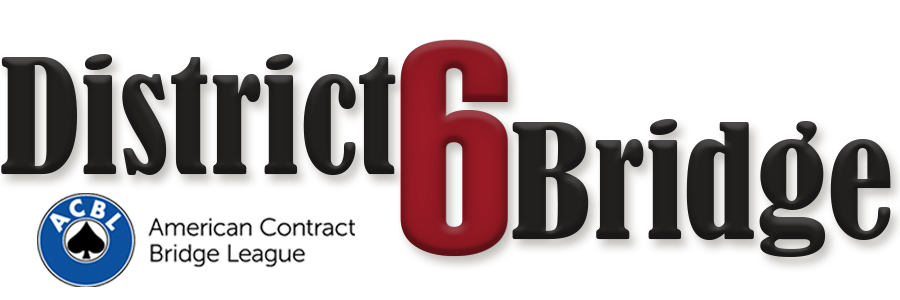I asked the experts the following: Playing matchpoints, neither side vulnerable, the bidding goes 1S: – pass – pass to you. What is the minimum hand with any 3334 distribution that you would balance with? If the opening bid was 1D:, would that make much difference? Would playing IMPs make a difference? Some of the experts only addressed the number of HCPs they would need to make a balancing 1NT bid with this flat 3334 hand, and some described other factors that would affect their decision to bid and what their bid would be.
Point No. 1: The most important variable is your balancing notrump range. You can’t balance with 1NT with six HCPs if your balancing notrump range is 10-14 HCPs. Your range is a guide. You could be outside the range, but that creates problems if your partnership uses the known range to decide whether to invite and when to accept an invitation.
Kit Woolsey: By my agreements, a balancing 1NT call shows 10-14 HCPs over a one-of-a-minor opening bid, and 10-16 HCPs over a one-of-a-major opening bid. So I guess the answer to both questions would be 10 HCPs. Form of scoring makes no difference at all.
Jeff Rubens: In all cases, to balance I would need the minimum in valuation required to bid 1NT in the current partnership.
Point No. 2: There are two reasons to balance: to compete for the partscore or bid game. The opponents are more likely to be in a makeable contract when they open one-of-a-major. If between you and your partner, you have half the HCPs in the deck, you won’t get a good score allowing the opponents to play and make one-of-a-major. The experts say that the minimum needed to balance with 1NT over one-of-a-major is ten HCPs, but more points are needed to balance over a minor. Partner already denied some types of hands when the opening was one-of-a-minor, because partner didn’t overcall or double. Therefore partner either has diamonds or a bad hand.
Chris Compton: The whole thing in making this decision is vulnerability related. With no one vulnerable, you must balance with ten HCPs because if they have even a 5-2 or 4-3 fit in their major and you have nearly half the HCPs in the deck, you can’t go peacefully. It does not matter to me if the opening bid was a diamond, but it is much clearer to bid when it is a major.
Steve Bloom: I would balance with a good-looking nine count. You don’t get rich at matchpoints defending a low-level major suit contract. I tend to be more conservative over 1D. Partner did not act, and so, either partner has a poor hand, or diamond length. Either way, there is quite a good chance that the opponents are not in their best suit. That said, making 1NT is better than +50 or -70. I would balance if I figure we have a good shot at holding at least half the points in the deck. Figure a nice twelve count.
David Bird: With 3334 shape I would need ten points to balance against 1S. If you balance on much less than that, it is difficult to determine accurately if your side has game values. When the opening bid was 1D, this may well be a poor-scoring contract their way. So, although the bidding is lower and there is more space to resolve the situation, I would require the same ten points to balance.
Barry Rigal: S:xxxQxxKxxAxxx is too light to balance. Throw in one more defensive trick: SxxxKxx+KxxAxxx would be a dead minimum. With an eleven-count I’d bid 1NT over 1D. A ten-count over 1D is dodgy…I’d probably pass, but I have to admit table action is relevant here.
Ralph Katz: This type of question is hard to answer using only the hand you gave us. How good is the field? How is my game? Who are the opponents? Did either opponent hesitate or give anything away? What system are the opponents playing? The texture of the hand also matters. Over 1S it would take about a twelve-count to balance and maybe a little less over 1D, especially at matchpoints.
Marty Bergen: I prefer a good ten HCPs to balance. I am more likely to pass 1D because 1D is less likely to be an acceptable contract for them. I balance a bit less at IMPs because too many opponents forget to open 2C.
Point No. 3: Another variable is that the opponents might have missed a game.
Eddie Kantar: After 1S about ten HCPs. Same with 1D. At IMPs, 11 or 12 HCPs minimum.
Bob Hamman: Probably I would balance with 1NT with a reasonable ten-count and spades at least double-stopped: S:KQ10KJ10xJ10x1098, for example.
Karen Allison: I would balance with 1NT with a decent ten count and a spade stopper, but not with all queens and jacks.
Jill Meyers: Over 1S – Pass – Pass, the minimum I would need to make a bid with 3334 distribution is a good 11 HCPs. Over 1D – Pass – Pass I would have 13 HCPs.
Fred Hamilton: I would balance with 3334 and 10 HCPs at matchpoints, but would need a decent 11+ HCPs at IMPs.
Larry Cohen: If the four-card suit in the hand with 3334 distribution is hearts, that makes me slightly more likely to act. If the four-card suit is spades, I am less likely to act (and if I do, it will be 1NT). If the four-card suit is a minor, that is not as good as having four in the other major of course. So, over 1S, my minimum for balancing with a flat hand would be roughly 11 HCPs. If the 11 HCPs were in Q’s and J’s, I’d probably pass. If it was prime, you could talk me into balancing. If the opening was 1D, that changes matters greatly. Now, we have a chance to play in one-of-a-major. I could picture balancing with some nine-counts, maybe even a prime eight. Ugly, but defending one non-vulnerable diamond contract hasn’t won me many matchpoints in my life. Again, if the four-card suit is in one of the majors, that is a slight plus for balancing over 1D.
Kerry Sanborn: I would most likely pass anything less than a chunky eleven-count, although there might be a ten which looked good also. Over a 1D opener, it wouldn’t make much difference, assuming that I would be reopening with 1NT, which would be even more preemptive if my LHO had a very good hand. After a 1S opening, game in hearts their way is a real possibility, but after a 1D bid, LHO less often has a good, unbalanced hand that will produce game in four-of-a-major. I would tend to sell out more quickly at IMPs.
Henry Bethe: I would balance with something like S:Q10xAJxxxxKJ10x. That is to say a decent eleven-count with some defense against both majors. I am somewhat less aggressive over 1D but more aggressive at IMPs than at matchpoints.
Eddie Wold: With that distribution, I would only want to balance with 1NT since there is a premium for declaring and not defending at that vulnerability. I would balance with as little as 11 HCPs although you might survive the opponents with less than that, you probably won’t survive your partner’s action. The following hand would be my minimum: S:Q10xKxxAxxQ109x.
Point No. 4: The race to 1NT. If one side can take seven tricks and the other six, it’s best if you’re the one that is in 1NT.
Bobby Wolff: With 3334 distribution I would need at least 11 HCPs to balance with 1NT. Certainly I would not bid a suit or double. Over 1D at matchpoints I would need more with 3334 distribution (a minimum of 12+ HCPs) because of the greater likelihood that the opponents are not in a high scoring contract (diamonds). At IMPs, and depending who the opponents are and what system they are playing, I would have a wider range of judgment, but with fewer than 13 HCPs I would tend to pass. I try and talk partner out of trapping at every opportunity.
Grant Baze: Matchpoints, non-vulnerable, I would balance with 1NT with an eleven-count: S:QJxxxxKxxAJ10x, for example. To balance with a double I would need more fast cards, such as S:xxxAxxxxxAKxx. Here I would want fast cards as protection (against the opponents attempt to penalize us). We are not badly placed defending against 1D, so I would need more to balance with 1NT, about a 13 count, such as: S:QJxQxxKxxAJ10x. To balance with a double I would need more fast cards — S:xxxAQxxxxAKxx. Here I would want fast cards (as compensation to my partner for no four-card major). Playing IMPs would make a serious difference. I wouldn’t balance with 3334 eleven or twelve-counts. Nor would I reopen with a thirteen-count concentrated in the minors. WithS:xxxxxxAQxAKxx, for example, I would pass both 1S and 1D.
Peter Weichsel: On question one, the quality of my opponents would factor significantly into the equation. The minimum hand I would balance with against reasonable opponents would be about a good nine or ten HCPs for a takeout double, if I have three small spades and something sensible in hearts. With a spade stopper I would need a reasonable eleven-count to bid 1NT. As the national or world titles go up on my left and right, so do the requirements for my entering the auction. Over 1D, the only real changes that I would consider is, the high card concentration; that is, I would want to have some major suit cards before I got into the auction. Playing IMP’s would make the requirements about 5-10% higher.
Conclusion: What we’ve learned is that when you are 4333, you could bid 1NT over one-of-a-major with ten HCPs, certainly a good ten. However, you need a little more to bid over one-of-a-minor. When it goes one-of-a-major – pass – pass, the opponents are usually in a reasonable spot so you balance more often. After one-of-a-minor – pass – pass, they could be in a 4-1 fit, so you balance less often.

